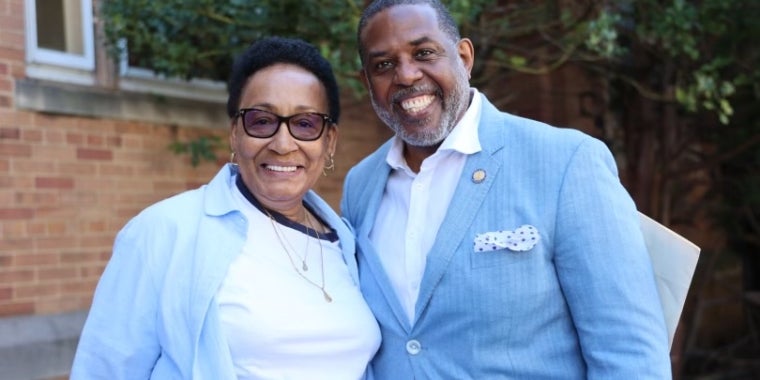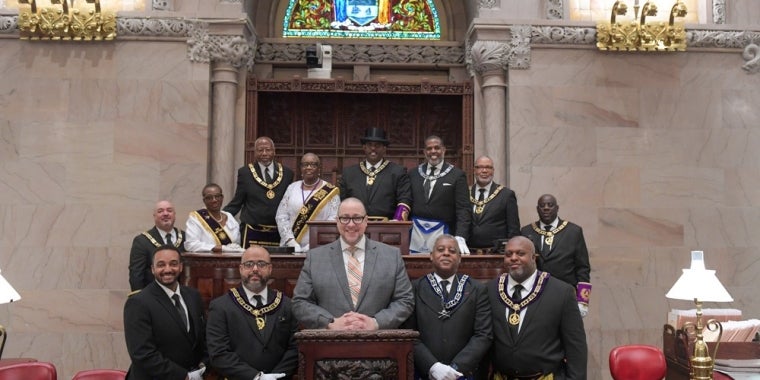
Senate Democrats Propose Overhaul Of 421-a Affordable Housing Program
Albany—State Senator Kevin Parker has joined with the New York State Senate Democratic Caucus and leading housing advocates in efforts to modernize the 421-a tax incentive program for new affordable housing.
Senate Democrats are supporting a series of changes to the 421-a program that would end the use of these tax breaks as a ‘hundreds-of-millions dollar giveaway for luxury housing’, to instead be a program that truly creates affordable housing and makes wise use of tax-payer dollars. The current law is set to expire at the end of the year unless a new law is enacted by June 30, 2007.
Other Democrats who are advocating for this package include Minority Leader Malcolm Smith, Senators Liz Krueger, Marty Connor, Efrain Gonzalez, Bill Perkins, Eric Adams, John Sampson, Jose M. Serrano, John Sabini, Diane Savino, Eric Schneiderman, and Velmanette Montgomery.
"The lack of affordable housing is a moral issue," said State Senator Kevin Parker. "An increasing number of New Yorkers are paying too much for their housing, leaving insufficient income to meet other essential needs. Public benefits like 421-a should generate a give-back to the public, not be exploited as a non-reciprocal program in which luxury developers use public benefits for their own profit." He added: "This housing crisis is impacting my constituents in the 21st Senate District. We must reform this program to require affordable housing in all 421-a buildings in the City so our people can stay in their communities and live with dignity."
According to Senator Liz Kruger who designed the package, "There are very real problems with 421-a and it is vital that the legislature not just renew the program before it expires, but correct the mistakes existing in the current law.".421-a comes at a real cost to the City—more than $400 million in lost revenue every year—as such we should require that the City is assured this program is only used as an incentive to build affordable housing. Currently, the vast majority of these tax credits are going to luxury buildings in my district with little affordable housing being built anywhere. News flash! Luxury housing developers do not need incentives to build on the Upper East Side."
"If the government is going to provide property tax exemptions, then we need to mandate affordability throughout East Harlem and the Bronx. I can see no logical reason to subsidize luxury condos with tax-payer money in the rapidly gentrifying neighborhoods that I represent," said Senator José M. Serrano (D-Manhattan/Bronx).
Section 421-a of the Real Property Law was enacted in 1971 to encourage developers to build new multi-family housing in New York City by granting them substantial property tax savings under 10- to 25-year plans. When the program was created, New York City's population was shrinking and the City was facing a severe fiscal crisis. At that time, 421-a was passed in order to ensure that the construction of new private multi-family housing continued through substantial tax breaks for developers. In the 1980s, as the economy recovered and the real estate market rebounded, the 421-a program was adjusted to encourage the construction of affordable housing through the creation of a geographic exclusive area (GEA), more commonly known as the "exclusion zone." In order to receive tax benefits, developers of new buildings in the exclusion zone, roughly between 14th and 96th Streets in Manhattan, must now either include 20% affordable units on-site or purchase "negotiable certificates" to fund off-site affordable housing. However, elsewhere in New York City, developers continue to receive "as-of-right" tax breaks for new developments with no affordable units required.
Even all-luxury buildings are getting this exemption. "The first order of business is to stop the use of 421-a as a means to subsidize luxury housing in New York," declared Senator John Sabini (D/I-Queens). "Our neighborhoods need more affordable housing now."
In preparation for the impending expiration of 421-a, Mayor Bloomberg and the New York City Council passed legislation calling upon the State to continue the program with changes to the exclusion zone, elimination of the negotiable certificate program, a requirement that all affordable housing to be built on-site, and creating a $400 million affordable housing fund. The Mayor and City Council recommendations are excellent, but the Senate Democrats feel even more should and can be done to improve this program.
Soon after the City passed their local law recommendation changes to the State Legislature, the Pratt Center for Community Development released "Still Subsidizing Luxury Development" (December 2006). This report highlighted 50 luxury developments that would still be eligible for 421-a tax breaks even under the City's proposed changes. The buildings are located in all 5 boroughs, including:
Solaria (Lifetime tax break of $6,975,475)
65 market-rate condos; $720,000 - $2 million
Oceana Condominium & Club (Lifetime tax break
of $87,007,700) 850 units; $620,000 - $2 million
Riverwalk Place (Lifetime tax break of $24,682,450)
230 market-rate condos; $750,000 - $1.3 million
44-27 Purves Street (Lifetime tax break of $9,405,000)
57 market-rate condos; $440,000 - $1.3 million
130 Bay Street Landing (Lifetime tax breaks of 8,300,000)
101 market-rate condos; average $500,000
These examples illustrate the continued limitations of the City’s proposed 421-a changes.
"The changes that we are pushing for will prove to be a huge economic boon for the City if they are enacted," said Senator Eric Schneiderman (D-Bronx/Manhattan). "It is estimated that the City will realize up to $1 billion in new revenue, which we believe should in turn be dedicated to creating and preserving affordable units around the city. This is about more than changing boundaries of the exclusion zone, it is about ensuring that the money is used to help families who need it the most—not to cushion the coffers of luxury developers."
The Senate Democrats propose that:
Developers throughout New York City only receive a 421-a property tax break if they include at least 30% of total units as affordable housing for low- and moderate-income families;
"Affordable" be defined as families that earn no more than 80% of the median household income for the City of New York (approximately $35,000 for a household of 4);
Preference for 50% of affordable units should go to existing residents within the local Community Board;
The program should require that all affordable units be on-site, as part of the market-rate development, in order to create mixed-income communities;
The affordable units should be made permanently affordable to prevent a future crisis when restrictions expire;
Owners in buildings receiving property tax exemptions should be required to pay prevailing wages to their building service workers. New York City should not subsidize the payment of substandard wages to building service workers;
The additional tax revenue generated from these changes should be placed in a dedicated New York City trust fund for affordable housing targeted at the 15 poorest community districts in the city.
"In April of last year, the Pratt Center for Community Development found that even though over 100,000 units have been subsidized by the 421-a program, less than 10% of these remain available to low- and moderate-income families," said Senator Martin Connor (D-Brooklyn/Manhattan). "This is not rocket science. The state is clearly investing a great deal of resources in an effort to preserve the socio-economic diversity of our city, and lax regulations of the 421-a are allowing that mission, and that money, to be misused."
The New York State Legislature must decide whether to extend Section 421-a, and if so, what changes should be implemented prior to June 30th, or the law will sunset at the end of the year.



